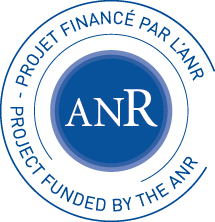This project which was funded by the ANR for the period 2012-2016,
concerns basic research in fundamental mathematics. More specifically,
it combines geometry in a broad sense, low dimensional topology, group
theory, dynamical systems, and geometric analysis.
In recent years, the proofs of Thurston's geometrization conjecture as
well as of the "virtually Haken" and "virtual fibration" conjectures,
have
considerably sharpened our understanding of 3-manifolds. The latter two
results state that a hyperbolic 3-manifold admits a finite sheeted
covering containing an embedded essential surface, and, even better, a
finite sheeted covering admitting a surface fibration over the circle.
Their proofs are based on tools coming from both geometric group
theory and low-dimensional topology. In particular, they rely on a deep
understanding of the subgroups of the fundamental groups of hyperbolic
3-manifolds.
Nonetheless, a major question concerning the structure of hyperbolic
3-manifolds and their fundamental groups is still open: this is
Cannon's conjecture which proposes a dynamical characterisation
of the fundamental groups of hyperbolic 3-manifolds. One way to attack
this conjecture is to look for splittings of the fundamental groups
into elementary blocks.
In a more algebraic setting, Gromov's
conjecture also deals with the study of subgroups inside hyperbolic
groups and concerns the existence of surface subgroups inside
hyperbolic
(non-elementary and non free products) groups.
Motivated by the above questions that show the importance of
understanding the subgroup structure of certain groups as well as their
splittings, the aim of the present project is to develop techniques to
detect the existence of special subgroups (surface subgroups,
quasiconvex subgroups) in groups that are relevant in geometry or
dynamics (hyperbolic and relatively hyperbolic groups, CAT(0) groups,
and convergence groups) and to study their properties or to establish
conditions under which certain properties hold. We note that the
understanding of the subgroup structure of a group is strongly
connected to the understanding of the splittings of the group.
The main tools we wish to exploit to tackle these problems are:
-Cubulations. We remark that cubulations have been exploited by Agol, Wise et
al. and provide the main ingredient in the proof of the virtual Haken and fibration conjectures.
-Lp-cohomology. Lp-cohomology was exploited by Bourdon to detect splittings of hyperbolic groups.
-Dynamics of the induced action on the boundary. Note that this also
relevant to the boundary characterisation of Kleinian groups, and
Cannon's conjecture.
In this way, we hope to understand whether results which are known to be valid for
hyperbolic 3-manifolds extend to more general settings (hyperbolic and
relatively hyperbolic groups, CAT(0) groups).
One of the strong points of the project is that it brings together
several mathematicians working in different fields, all relevant to the
project, namely combinatorial and geometric group theory, low
dimensional topology, hyperbolic geometry, conformal dynamics, etc.
Members of the project are also among the authors of some important
recent breakthroughs in the subject. A feature of the project will be
to encourage members to share their specific expertise and
acquire new knowledge at the same time.
The project will be structured by biannual meetings having the three
following purposes: providing background on each topic, presenting the
main open questions and advances obtained, and setting up
collaborations on the future tasks. This will be one of the scopes of
the "ateliers" that will be organised twice a year.
The ANR will provide a
12 month Post-Doc fellowship for a mathematician
working in the fields touched upon by the project. Please follow
this
link for more details about the position.

